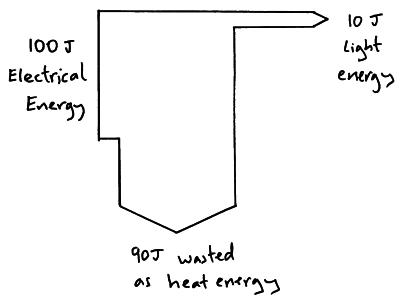Home insulation
Insulating your home can reduce energy consumption. Ways of insulating your home are;
- double glazing windows
- roof insulation
- cavity wall insulation
- fitting draught excluders to doors and windows
- fitting thick carpets, underlay and curtains
Other ways in which energy consumption can be reduced are;
- fitting low energy bulbs and LED lighting
- reducing the thermostat setting in your home by a few degrees
- replacing old appliances with energy efficient ones
- travelling by public transport
- replacing old cars with new more efficient ones
In each of the examples above you must be able to comment on the cost effectiveness of each idea.
One of the ways of doing this is pay-back time. If it costs £200 to insulate your roof, and that insulation saves you £200 a year in heating costs then the pay-back time will be 200/200 = 1 year. BUT, if you double glaze your home at a cost of £4000 and it saves you £200 a year in heating costs them the payback time is 4000/200 = 20 years.
Energy Transfers – types of energy
There are nine types of energy;
- thermal (heat) energy
- sound energy
- light
- electrical energy
- chemical energy for exmple in coal and petrol
- nuclear energy for example in the sun and nuclear power stations
- elastic potential energy for example in a stretched elastic band or wound spring
- gravitational potential energy gained when objects are lifted up in the Earth gravitational field
- kinetic (movement) energy
Devices and appliances can transfer energy usefully from one form to another, however some energy is usually wasted (most often as heat energy).
Click this link for more videos.
Example; A radio usefully transfers electrical energy into sound energy, however some energy is wasted as heat energy. These energy transfers can be represented by flow diagrams called Sankey diagrams.
Sankey diagrams
Below is the Sankey diagram for a filament bulb. The 100 joules of electrical energy is transferred into 10 joules of useful light energy and 90 joules of wasted heat energy.




